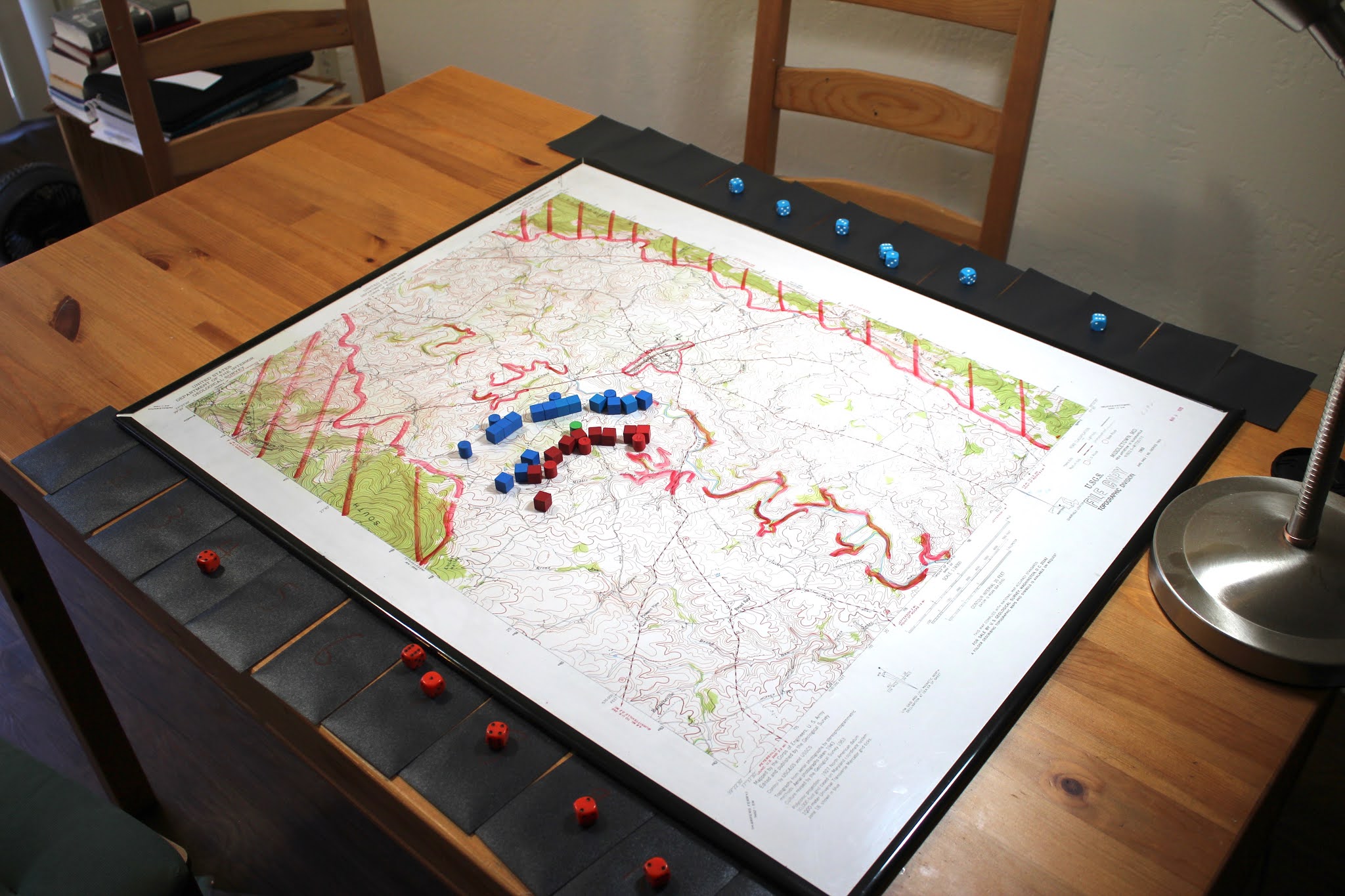(I moved this part of the convo from 6mmFans thread because I didn't want to distract from his hard work!)
Yes- the basic rules are mostly done. I need to work on the structure and make them a bit easier to read. I'd like them to be easy to use for play testers.
They represent a lot of the ideas I've been toying with for several years involving player perspective. Perspective, to my mind, is the interplay of time and knowledge in the game. I think most rules abandon these two problems because they're difficult to puzzle through. But I (hopefully) came up with a way to solve them. The gaming experience is certainly unique. The game itself is not so much a single game as it is an engine around which any battle from any time period can be played, with a few (or many) modifications. You could use the basic core mechanism to play a game in Ancient Egypt or in World War 2, but they probably work best for Early Modern to Modern armies. I've focused on the American Civil War because I know it fairly well, and because I can use 1:25,000 quadrangle maps (which are free online from the USGS store) to create a uniform gaming system.
The big breakthrough is that it allows players to game out the last few miles of maneuver to the battlefield (or battlefields), then complete the battle using the same mechanics. The rules will probably be polarizing because a lot of the mechanics are unique, although when all put together they create some real nail biters:
1: The central and most important feature of the game is an in-game clock that moves by ten minute turns. Each player has a phase within the turn.
2: Unit strength is tracked off board with markers, and not revealed until the end of the game.
3: Both players are blind to the total strength of enemy forces, and to the actual enemy strength they are in contact with at any given point.
4: Artillery attacks are abstracted into combat rolls, unless players choose to engage in a bombardment of the enemy, in which case the effect is hidden until contact is made.
5: Combat results are largely a function of troop numbers and the personality traits of unit commanders.
6: The game is played with 10mm blocks, but could just as easily be played with 2mm figures (or 3mm, or 6mm, if the 1:25,000 map is printed at 2X full size).
7: The game needs to be played on a map in order to have a realistically complex road network. The rest of the terrain is simplified; combat is assumed to happen dynamically between opposing unit markers. There is a system by which commanders can "discover" key tactical terrain during the game (such as Little Round Top or the Sunken Road). Otherwise, terrain is marked as difficult or impassable at the beginning of the game, and otherwise ignored.
8: Units are not represented like in a normal war game; two different game pieces are used to represent each command. First, a columnar game piece represents troops dynamically moving throughout the turn (literally, "in column formation"). It can be thought of as the head of the march column, or the direction toward which the commander is projecting force. Then, there are cubes used to represent deployed troops. The strength of troops in the command is always hidden from the enemy, so that the deployed troop columns represent what we'd call the "forward line of troops" in modern parlance. The idea of deploying out of sight of artillery and skirmishers, which was standard in the ACW, is baked into the rules.
The game looks like this when it's being played:

It looks simple, and in fact this is a pretty simplified situation. In fact, an awful lot happens during a game.
I'm mostly done. I wrote it in a chronological, "how to set up and play" style. I do need to get some pictures done still, and maybe even make a youtube video or two as a walk through. I also need to add a few more sections on how the game ends, and then make a few easy scenarios. I'm excited to see what people think though. I don't know if I'll end up publishing them as an actual book (ebook), or if I'll just put them online as a free set. If I publish them I'll probably use Amazon Kindle, and maybe hire a layout person to make it look nice. I'd also probably use some FMS Micro Troops (the small, 12mm bases used for my Wagram project) for the illustrations in order to tie it in to the figure range a bit better. Use it as a loss leader... : )
Of course, I'm about to start an extremely difficult new job in two week or so, which means I have a limited time to make all that happen. We'll see. Now that said, the wildfires have me stuck inside all day for the next week at least...